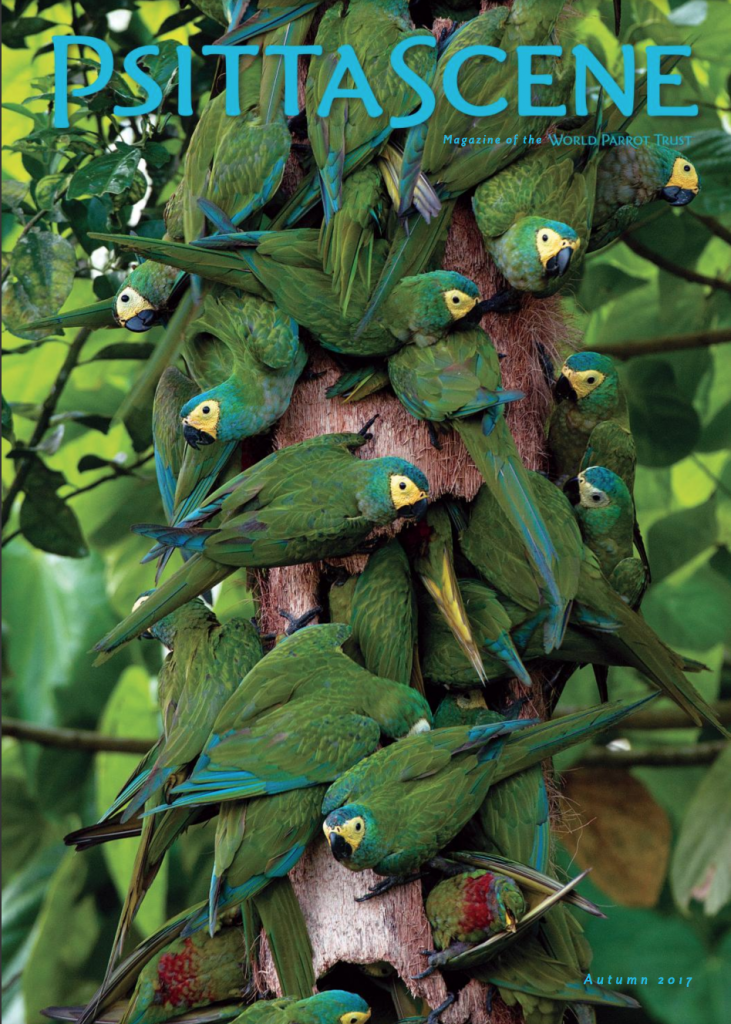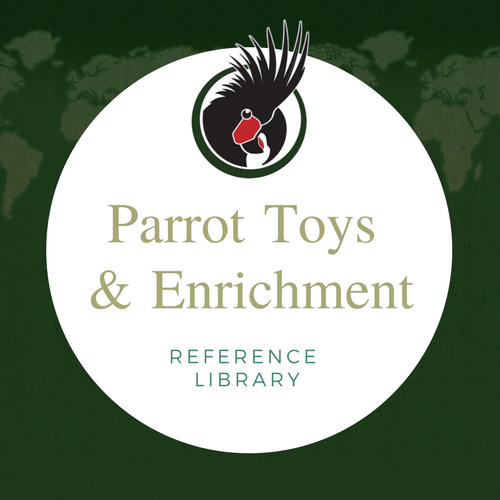
A Toy to Climb All Over
Hanging & Gym Toys

One of the more entertaining yet necessary things for a companion parrot to do is to climb. Climbing is one thing that birds do well, besides flying. Scrambling around is involved in foraging, mating, escaping, playing – nearly everything a parrot does, every day, in the natural world. And so it makes sense to try and replicate the conditions for climbing, hanging and performing other acrobatic moves to engage, exercise and mentally stimulate your companion bird. (Not to mention, mentally stimulate yourself as it takes some creativity to consider all these things.)
A simple rule: if a person can entice a parrot (subtly exploiting its natural curiosity) with a favourite food or toy item, it may be willing to climb for it, increasing its exercise load. Simple or complex toys alike can achieve this.
As is the way with all children’s and pet’s toys, safety for all is the first concern. With some climbing toys, the parrot is likely to be out of its cage.
Safety Tips to Remember
- Never leave your parrot out of its cage unattended.
- Examine all toys carefully. Check new toys for places where their legs or head may get caught, and frequently inspect old toys for fraying ropes, loops, or parts breaking down.
- Place your parrot’s play station or perch out of the main traffic area of the room. Also keep it away from the kitchen where it is in danger of toxic fumes and burn injuries.
- Watch out for ceiling fans, heat registers/radiators, furnace vents, open windows, open doors, fireplaces, and in the bathroom, open sinks, tubs, and toilets, or anywhere near water.
- For safety, use screw-clasp stainless steel quick links to attach toy and browse items to ceilings and cage wire. Spring loaded clasps can trap toes and beaks.
- Keep an easily cleaned mat under where your bird plays for both cleanliness and safety for the rest of your family.

Toys for Mental & Physical Stimulation
Browse: The cheapest climbing toy of all, just make sure it’s bird safe. Give as is or with food and toy items hanging from it, hide toys and food so they have to go searching. Use branches of grapevine (unsprayed), Saskatoon, willow, seagrass rope, natural raffia. Ensure they’re thick enough to support a bird’s weight; he’ll be more likely to use them. For a more comprehensive list of what’s safe plant-wise and what’s not, get our Common Household Poisons List.
Leaf bathing with suspended leaves: Many species (like caiques) love to bathe by rubbing themselves on wet leaves, as they would do in the wild. Use leaves of chard, kale and other greens for this (they can then eat them afterward). Weave into wire of cage or into other browse so they can climb to get them. The same thing (sans bathing) can be done with strips of unbleached white or brown wrapping paper.
Boings: Wire-enforced rope that can be shaped and suspended from the cage ceiling.
Swings: Made from wreath material or rope and untreated wooden dowel, swings suspended from cage ceiling using stainless steel quick links.
PVC gyms and perches. Suspend toys and food items to stimulate interest.
Ropes (untreated): Suspend and create trails around the room.
Get a Grip ™: and other bird-safe nets can also be suspended around the room.
Ladders: Commercial hard plastic, or flexible ones made of rope. Use on play gym areas.
Ramps: Made of hard plastic or wood. Use on play gym areas or in enclosures.
Hanging willow baskets: Suspend from the ceiling and fill with interesting items.

Indoor play stands: Make out of natural wood or PVC pipe. Attach favourite toys in different positions so the bird can climb to each. Avoid messy food items with wood stands, as difficult to clean.
Wooden clothes-drying rack: A quick and easy parrot gym, unstained and unpainted. Equip with favourite toy items to encourage climbing from dowel to dowel.
Build an outdoor aviary: Hang favourite and familiar items, plants, swings, boings, ropes and all the rest!
With a little bit of ingenuity (and common sense) a person can create a play area or areas for his/her parrot that will delight, entertain and engage. It is our responsibility as parrot caregivers to provide everything that a companion bird needs to be challenged – to be physically and mentally healthy – and to do it in a safe and interesting way that will benefit all involved.
Sources:
D’Arezzo, Carol and Shannon-Nunn, Lauren, A Practical Parrot Guide: Parrot-Toys and Play Areas, Springfield: Crowfire Publishing, Virginia, 2000.
The Parrot Enrichment Activity Book 2
Cravens, EB: Natural Environmental Enrichment for Captive Birds
© Copyright 2018 World Parrot Trust. All Rights Reserved.

